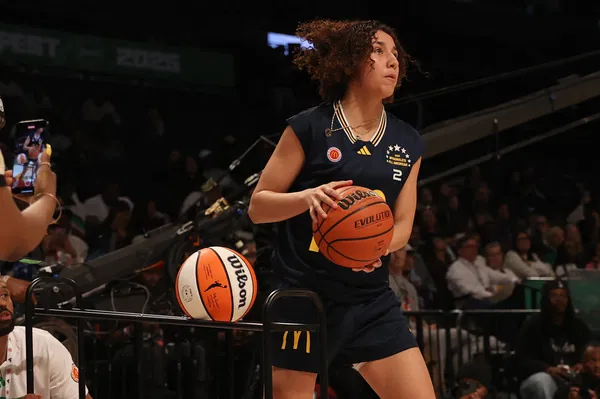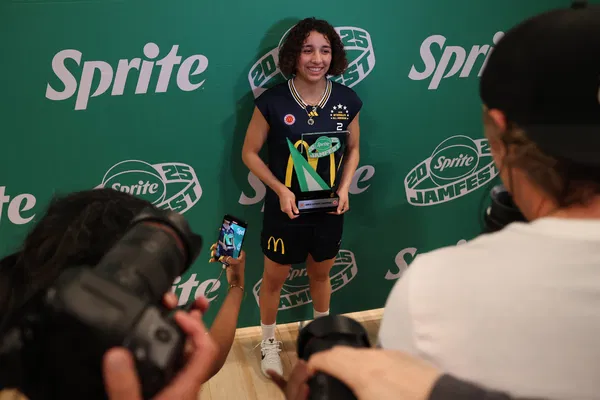
Aaliyah Chavez, the top-ranked player in the 2025 class, has been making headlines, but not always for the most favorable reasons. Her unexpected decision to commit to Oklahoma instead of traditional powerhouses like UConn and South Carolina has sparked debates, and her performance at the McDonald’s All-American Game has only intensified the scrutiny. While she showcased her shooting skills by winning the 3-point contest at Sprite Jam Fest with an impressive 18 points, her on-court struggles during the All-American game raised concerns about how well her skills will translate at the next level.
In the East vs. West showdown, Chavez’s team secured a convincing 104-82 victory, but her individual performance was underwhelming. She managed just 4 of 13 from the field (30.7%) and struggled from beyond the arc, making only 2 of her 8 three-point attempts. Normally a dominant ball-handler, Chavez found herself playing a secondary role, struggling to create shots against taller, more athletic defenders. During the West team’s explosive 18-0 opening run, she was barely involved in the action, a sign that she might need to adjust her game against higher-caliber competition.
Aaliyah Chavez is a bucket, no question.
But the McDonald’s game has exposed what elite size & speed can do to undersized guards.
She’s been playing off the ball & hasn’t had many looks.
— Pasha Bains (@DRIVEBasketball) April 2, 2025
Basketball analyst Pasha Bains highlighted these concerns on social media, stating, “Aaliyah Chavez is a bucket, no question. But the McDonald’s game has exposed what elite size & speed can do to undersized guards.” His comments reflect a broader discussion about how Chavez, who is listed at 5-foot-11, will handle the physicality and athleticism of college-level opponents.
As she transitions to Oklahoma, Chavez will face greater challenges as defenders become stronger, faster, and more skilled. Some critics believe she would have been better off choosing a more established program with a stronger track record of developing top talent. Oklahoma, which was eliminated by UConn in the Sweet 16, will need to maximize her potential if she is to succeed at the next level.
Fans have been divided on her decision. Some argue that the intense competition in the SEC will be too much for her, especially with powerhouse programs like Texas, South Carolina, and LSU dominating the conference. Others counter that she has already competed against elite talent in the Nike EYBL circuit, where she averaged 29.6 points, 4.3 rebounds, and 3.7 assists per game while leading her team to a championship.

While some skeptics claim she is overrated, her high school statistics paint a different picture. Over her career, Chavez amassed 4,796 points, 1,279 rebounds, 771 assists, and 476 steals across 150 games. Even though her McDonald’s game performance was disappointing—finishing with 10 points, 4 assists, and 2 steals—many argue that it was merely an adjustment period rather than a true reflection of her talent.
Some comparisons have been made to other top-ranked players who struggled early in their careers. Caitlin Clark, for example, faced similar doubts about her size and athleticism but went on to thrive in college and the WNBA. Chavez’s strengths lie in her basketball intelligence and adaptability, which could allow her to develop into a dominant force in college basketball despite not being the most naturally gifted athlete.
Ultimately, Chavez’s college journey will be closely watched. If she can improve her quickness, shot selection, and ability to handle elite defenders, she has the potential to silence her critics. Whether Oklahoma will provide the right environment for her to reach her full potential remains to be seen, but her skill set and work ethic suggest that she still has plenty of room to grow.